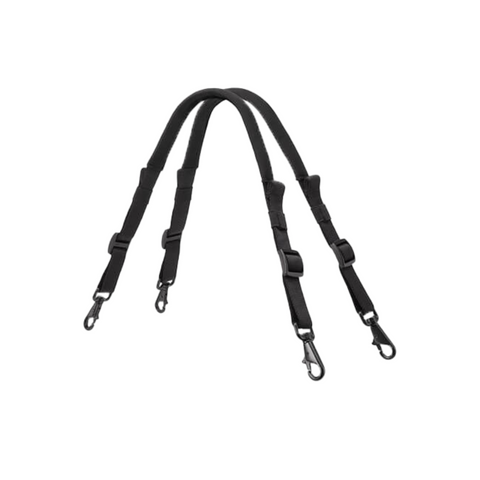Do you own a big dog? Some people like small dogs, while others go for the larger breeds like Great Danes, Mastiffs or Newfoundlands. At HelpEmUp Harness, we work with breeds small enough to fit into a purse or large enough to be a small horse!
What we have heard that large dogs often have a bad reputation through no fault of their own. There are many myths regarding big dogs that we hope to dispel here:
- Big dogs are aggressive. By their sheer size, many people think larger dogs are going to be aggressive when in fact many are gentle giants. Remember that dogs aren’t born aggressive. It is a learned behavior through mistreatment or fear. I have seen many chihuahuas who are fierce! If you have ever been hugged by a sweet Newfoundland or rescued by a Saint Bernard, you’d realize your fear of big dogs is unfounded.
- Big dogs are mean (particularly to children). Many large dog breeds are family friendly particularly around children. The Labrador and Irish Setter are great examples. Personality is a better indicator of how well dogs get along with kids versus size. While it is true that a Mastiff’s or Great Dane’s tail can wipe out building blocks with their mighty tails, children have been known to climb all over big dogs as well. What is most important is that the dog be trained to be around children. Big dogs can be great playmates for kids!
- Big dogs are harder to train. Although each breed has its idiosyncrasies when it comes to training, big dogs are no harder to train than small ones. In fact, large poodles and German Shepherds are known for their intelligence. The main thing is to train large dogs – any dog – so they don’t jump up or drag you around on a leash.
- Big dogs are more susceptible to illness and degenerative conditions. It is true that most smaller dogs have longer lifespans. It is also true that bigger dogs are more susceptible to arthritis. However, the biggest indicator of inherited genetic disorders exists amongst purebreds (versus mixed breeds) because of hereditary traits. For instance, pugs are known for respiratory problems and German Shepherds can have spinal issues. All dogs come with their own issues, personality and health history that may have nothing to do with size.
- Big dogs can run forever. There is a misconception that bigger breeds make great running companions. For both humans and dogs, running is a high-impact sport that can be hard on your hips and legs. Hip dysplasia can be common among bigger dogs, so ask your veterinarian before you take your dog for long runs. He may also have some suggestions for special dietary needs and supplements that can make running safer for your dog. Some larger breeds like Vizlas, German Shorthaired Pointers, and Weimaraners love to run. Some small dogs like terriers and border collies often win the race!
- Big dogs can’t live in apartments. Big dogs need big back yards, correct? The bottom line is that any dog can be happy living anywhere – no matter how big or small — if their exercise needs are met. I have met many apartment dwellers who take their bigger dogs for long daily walks and their dogs are as happy as can be. Once a dog has been exercised he is usually ready to rest – in any space you provide.
- Big dogs can’t be lap dogs. I have seen many Mastiffs curled up in their owner’s laps as they are cuddling. As many big dogs would say: “If I don’t fit in your lap you need a bigger lap”.
- Big dogs are great guard dogs. Many Labradors and Golden Retrievers would lick a burglar to death versus display ferocious behaviors. Want a good guard dog? First, they need to be trained specifically to guard. Second, you might want to choose a Great Pyrennes or Anatolian Shepherd versus just any large breed.
- Big dogs tend to be overweight. Obesity can run in large or small dogs. It is directly proportional to how much you feed your dog and exercise him versus the size of the dog. The best way to keep any dog at the optimal weight is to feed them the right portions and exercise them frequently.
- Big dogs require a lot of exercise. The size of the dog doesn’t determine their exercise needs. The most important factors are breed and weight.
Help ‘Em Up® can provide both big dog harnesses and small dog harnesses that increases their mobility. It doesn’t matter if they are large or small – we can help them all.



